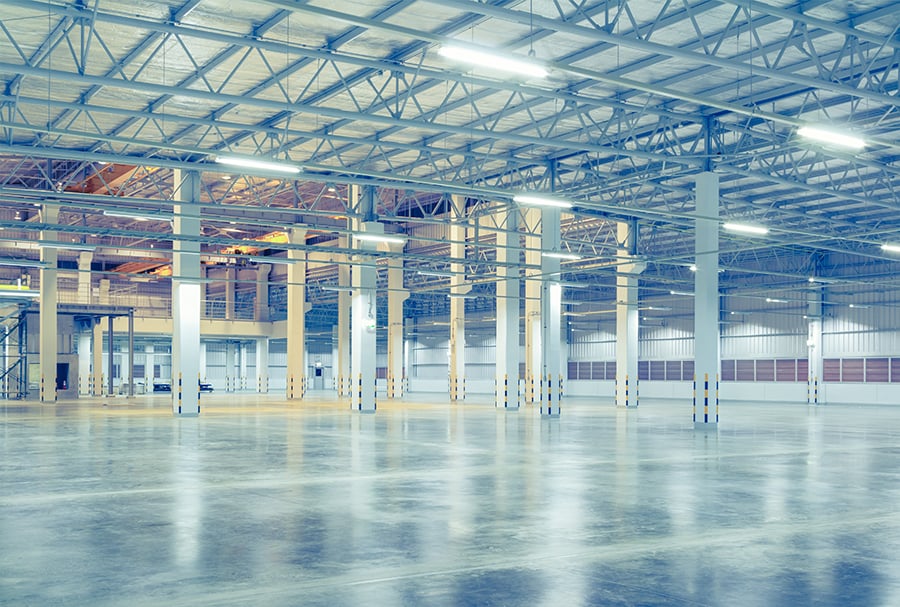Industrial buildings are more complicated than other types of commercial real estate. One area where this complication manifests is in the vast array of industrial properties. While they fit into three groups -- warehouses, manufacturing facilities and flex space, the categories get subdivided. Here are the types of industrial buildings that you can find in most communities.
Warehouse Buildings
Warehouse buildings are typically large buildings with limited windows, many truck doors, and not much else. They come in one of five broad classes of building.
-
General Warehouse / Distribution. When you think of a warehouse property, you're probably thinking of a general warehouse building. Warehouses may be one or multiple stories (usually through the addition of "mezzanine" levels), and could have small office or showroom spaces, but their general purpose is to hold items for storage or for reshipment.
-
Cross-Dock / Truck Terminals. A truck terminal or cross-dock facility typically has relatively little storage, and, instead, has a large number of truck docks. They allow trucks to be unloaded and reloaded, facilitating the movement of goods along the supply chain.
-
Cold Storage. Cold storage facilities are refrigerated warehouses. Usually used in the shipment of food or other perishable goods, these properties have temperature control to keep items cool -- or frozen. In addition to food, cold storage facilities can hold agricultural products, artwork, or pharmaceutical items, among other things.
-
Food Grade. Food grade storage is a special type of warehouse that meets higher standards set by the Food and Drug Administration. Among other requirements, they usually meet high levels of cleanliness, have integrated pest management systems, and follow different cleaning and maintenance protocols. Pharmaceutical grade warehouses are similar to food grade properties, but typically meet even higher standards.
-
Data Centers. A data center is a warehouse for information. Data centers typically have specialized build outs to hold racks and racks of servers along with extensive security and physical hardening to keep those servers safe. They have robust connections to Internet backbones, ample power and powerful cooling systems to dissipate the heat generated by all of the computers inside of them.
Manufacturing Facilities
While manufacturing facilities can frequently look like warehouses from the outside, they are built differently. Expect to see specialized build outs and heavy power connections to support the machinery inside.
-
Heavy Manufacturing. Heavy manufacturing buildings include everything from factories in what look like warehouses to extremely complicated structures like chemical plants and oil refineries.
-
Light Assembly. Light assembly buildings are typically smaller, and may also be multi-tenant. Some light assembly buildings can be built similarly to warehouses, as well.
Flex Space
Flex space is an industrial property that mixes different applications. Sometimes referred to as showroom, office/warehouse or R&D space, a flex building typically has bays with roll-up doors in the back and windows in the front. Flex properties are usually smaller and lower than warehouses, with clear heights falling between 10 and 20 feet, instead of between 25 and 40 feet (or more). You might find spaces that are completely built out as offices in addition to spaces that have retail showrooms in the front.
Here are a few other article we think you'll enjoy:
What to Know About Your OPEX (Operating Expenses)
Subscribe to our blog for more CRE tips!!







